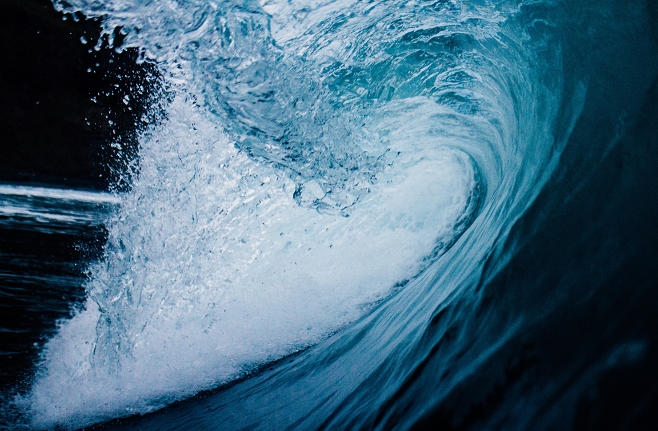Galapagos and the intangible value of the sea

Galápagos the exhibition has just opened at the Foundation’s Centro de Arte Moderna (CAM for short) in Lisbon. It’s the latest flowering of a five-year Gulbenkian artists’ residency programme, which supported leading contemporary artists (Marcus Coates, Jeremy Deller, Tania Kovats, Paulo Catrica, to name a few) to spend time on the Galápagos Islands, connecting with scientists at the Charles Darwin Research Station and with the local community.
I’m biased, of course, but the exhibition looks fabulous in CAM’s cool, spacious environs, flooded with Lisbon light and framing a view of the Gulbenkian gardens – I’d urge you to visit, if you happen to find yourself in that part of the world. And, if not, then the publication Galápagos and the website amply do justice to its themes and the artists’ work.
If you do go, what will you find? After the hubbub of the opening, I returned the next morning for a quieter visit, a closer look. In the entrance lobby, a group of school children, aged six or seven, were crowded round the plinth of Dorothy Cross’s piece Whale. On the plinth is a rusty bucket; above it, the whole length of a whale skeleton hanging from the ceiling, head downwards. The children gazed up, silent, fascinated, listening to their teacher. I don’t speak Portuguese. I wondered what he was saying to them – and whether they would remember it.
Further on, a curator was discussing Alison Turnbull’s work Specimens with a group of adults in English. Specimens names and organises all the 105 specimens of Galápagos butterflies Alison found in the Natural History Museum’s collection in London. Would the curator also tell the story of Alison’s encounter on the last night of her stay with the Black Witch moth, previously unknown in Galápagos, or the connections she has forged through the residency between entomologists across continents?
The original impetus for the programme was to work with the Galapagos Conservation Trust (GCT) to create new perspectives on the Islands to extend GCT’s reach and influence. Much has evolved since then, much of it serendipitous and unexpected, but justifying our faith I believe that involving artists can change the equation somehow, can allow something different to happen. Through the residencies, new links have been created between scientists, artists and the local community on the Islands, between Galápagos and other parts of the world, and a new awareness of how we can shape culture and how culture shapes and changes us.
I made my way back past Jyll Bradley’s Audiences, showing people distant and exposed on the Islands’ black foreshore (she says of Galápagos that it ‘affords no shade’), past Semi-Conductor’s crinkled, colour-filled volcanic maps and Filipa César’s film installation inspired by the Argentine novella La Invencíon de Morel, past Alexis Deacon’s ambiguous creature (is it a porcupine? it good or evil?), a spidery sketch metres high on the white wall.
Tucked away, in a room before the main exhibition area, down shadowy steps, I found Kaffe Matthew’s immersive sound work You might come out of the water every time singing. You are invited to lie down on a square platform, which vibrates in sympathy with the music playing around you. The music is ‘shark’ music, engineered from data collected about Galápagos hammerhead shark routes and underwater sound recordings, and composed ‘live’ by the computer programme that controls it, so it’s changing all the time. The experience is eerie and soothing, as if you are nestled in the bowels of the earth or floating at the bottom of the sea.
I’ve been thinking a lot about the sea recently, as we scope and develop a new programme of work on ‘Valuing Oceans’. How do we persuade people that oceans are not just cold, dark, faraway places, as one opinion poll discovered, but systems of unfathomed wonder and mystery critical for the health and wellbeing of us all?
What role does Kaffe’s work play in this process? Why have we supported an artists’ residency programme and exhibition under our Environment strand?
What then do we take away from Galápagos? Like the proverbial iceberg, the exhibition is only the tip of the story. There’s a whole narrative of discoveries, encounters and experiences, which it can only signpost for us. As a Foundation, we must become more adept at understanding and accounting for this. But Galápagos is in itself an experience. As I leave CAM, I find myself thinking about the role of the arts in communicating the intangible value of the oceans – should this be an objective for our new programme? – and wondering, as their lives unfold, what those young Portuguese children will remember of their visit.
